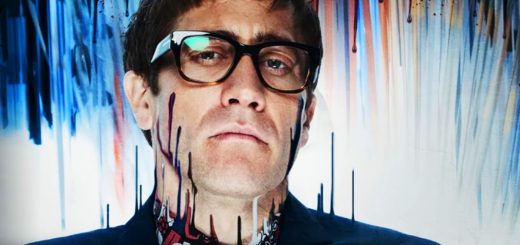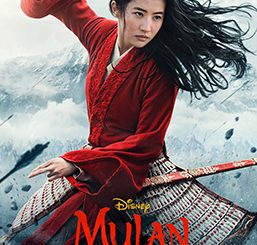“First we mine, then we craft, Minecraft:” a cringe-filled, lore-empty flop

Minecraft holds the title of best-selling video game of all time, having sold over 300 million copies and boasting 170 million monthly active users in 2024, thirteen years after its 2011 release.
In order to understand the buildup of hype surrounding this film, it is important to understand the culture that Minecraft has created and the community it has built.
Mojang Studios struck gold with the concept of this game, being one of the first of its kind that allowed players to freely roam an open world and adjust game mode settings based on their preferences, creating a world that is fun for players of all ages and skill levels.
Minecraft, unlike many traditional video games, has upheld its popularity and fans for over a decade. Along with that, as Minecraft has gained more traction among young audiences, it has begun to develop a rich fandom culture across social media platforms, most notably YouTube.
Many YouTubers who began playing Minecraft on their channels exploded in popularity and became coined as “Minecraft YouTubers,” the most notable influencers of the 2010s era including stampylonghead, DanTDM, LDShadowLady, CaptainSparklez, SSundee, and PopularMMOs.
Along with these Let’s Play gamers, the fandom became infamous for their dabbling into fanmade parody music, which was also commonly shared within YouTube. Many of these classic songs include “Don’t Mine At Night,” a parody of Katy Perry’s “Last Friday Night,” as well as “Revenge,” a parody of Usher’s “DJ Got Us Fallin’ In Love,” and the origin of the iconic phrase “Creeper, aw man.”
Once the popularity of YouTube’s “og ‘crafters” began to naturally fizzle out over time, the fandom experienced a sharp resurgence around 2020 when the Dream SMP was founded, bringing popularity to influencers like Dream, Technoblade, and TommyInnit and putting a new spin on the gameplay by introducing livestreams involving gaming among friends as well as roleplaying.
Now, Mojang Studios in conjunction with Warner Bros. Pictures, has developed a theatrical release based on the iconic Minecraft world. Although the announcement of the film was met with skepticism, most notably over the live-action aspect of the film and the divergence in animation style from the classic game, fans have been highly anticipating this film, and they are hoping to see their beloved game adapted into an entertaining film rather than a cringeworthy flop.
Many fans are hoping that the iconic YouTubers and fan-made music will somehow be incorporated into the movie.
All of this rich gaming culture has led us to this moment, April 4, the release of the 2025 Minecraft film adaptation.

After the movie begins by establishing the Minecraft “Overworld” setting, Minecraft’s iconic main character, Steve, and the main enemies, the pigmen from the Nether, it becomes immediately apparent that this movie is full of inadequate humor that struggles to stay consistent for its target audience.
Towards the beginning of the film when one of the main protagonists, Garett (a washed-up and self proclaimed “broke” adult character) is introduced, much of the humor is clearly geared towards adults in the audience, with jokes about financial desperation and adult male friendships that would go over any child’s head. These jokes, while they may have potential to land among a mature audience, come across as half-baked as the film’s PG rating doesn’t allow for much edge.
As the film progresses and the characters adventure into the Minecraft world, it begins incorporate a more child-focused lens when it comes to humor, adding in exaggerated violence, crude references to body parts that only a child (or an overly immature adult) would find funny, and classic comedic Jack Black theatrical numbers.
The movie continues to oscillate between catering towards younger and more mature audiences, providing an experience that will be boring for children at times and annoying for adults at others. Although it makes sense for the film to want to take into consideration the age ranges of fans of the original game, the task of trying to cater to all turns out to be too big for this film to deliver.

The most important part of a film adaptation of a video game is being able to translate that in-game world into cinema in a way that feels natural. Through its drastic stylistic changes and introduction of new game lore, this movie totally ruins any chance at establishing this connection.
Perhaps one of the most controversial parts of this film since its announcement has been its drastically different animation style as compared to the classic video game. Whereas the game’s animation is infamous for its strictly square style, the movie attempts to make the animation feel more “alive” by making mobs (in-game creatures) appear more human-like and fluid. Not only do these mobs look different, but they move differently, changing the way on-screen physics and logistics appear. This key difference greatly diminishes how the audience is able to perceive the movie in relation to the beloved game, as any scene, especially a fight scene, that contains too much realistic movement further cements the idea that what they are watching and what they know are totally separate entities.
In addition to the visual changes, the previous in-game lore is also built upon in order to further the story of this film. The most notable example of this is the introduction of a portal that can transport living things back and forth between the real world and the Minecraft world, a plot device that allows humans to travel the game universe. Despite this addition to the story serving as an important way for it to move forward, this added lore serves as another aspect of the film that forms a hard divide between the film and the material it was based on.

Minecraft, being an open-world game that allows for players to do and imagine virtually anything they want, isn’t necessarily designed with a backstory in mind. Although this doesn’t lend itself easily to a film adaptation, it leaves the door open for infinite possibilities in terms of stories that can be told and adventures that can take place. The writers of this film spent the time developing a unique plot that uses the world to move the story forward. However, in doing this, they created a story that takes priority over the actual landscape itself, leaving everything that makes Minecraft so special in the background of the new story they are telling.
The main story follows Garett, the seemingly overconfident but secretly insecure shop owner, and a pair of siblings, Henry and Natalie, who just recently lost their parent and are trying to adjust to life on their own. Throughout the movie, each of these characters interacts with each other and experiences personal growth that fleshes out their motives and personalities, which strengthens the plot and allows for an emotionally fulfilling and moving story to be told. However, in telling the story of these characters, the writers aren’t able to develop the world in which the story takes place, making Minecraft feel secondary to the plot.

A comparison can be drawn between the plot of this movie and that of Minecraft Story Mode, the first real-time the original game had been adapted into a story outside of fan culture and speculation. This video game was a separate release from the original Minecraft sandbox game and featured point-and-click gameplay that allowed the player to make decisions that impacted the progression of the story.
This game kept the same animation style as the original game, and even though it added new mobs and characters, every aspect of the game felt so well integrated into the world of Minecraft rather than trying to add Minecraft elements into the story. Because of this, the 2025 Minecraft film fails in comparison to Story Mode, which was released a full decade earlier.

Some of my earliest memories include playing Minecraft in the basement with my cousins on their old Xbox 360, being blown up by creepers, taming wolves while trying to break the record for amount of dogs owned, watching in awe as my older cousins built lavish castles while my houses were made of dirt blocks. Some of the first YouTubers I ever followed made solely Minecraft content, and I can remember racing home to be able to watch them play modded mini games and share (much needed) house building tips.
To say that I wanted this movie to be a success would be an understatement. Minecraft has been such a huge part of my life for so long that I want nothing more than for the franchise to succeed and be able to pass the joy of the game on to many generations to come.
And this is why it was so devastating to be disappointed by this film. From the moment I watched the first trailer, which provided a look into the changed animation style and blatantly cringe character dialogue, I was afraid for the film’s success.
I remembered that I had felt the same way about the “Five Nights At Freddys” movie that came out in 2023, which I ended up having a surprisingly positive opinion about, but upon experiencing the line “First we mine, then we craft. Minecraft” in the film, quite possibly the cringiest line I have ever heard in my life, I knew it would be a flop.
Not only did I find the humor to be dry, and the world building to be lackluster, but since I was so focused on experiencing Minecraft through this new form of media, I found it hard to connect with any of the characters. Rather than leaving the theater excited by seeing a fandom I am a part of explored in a new way, I left thinking, “It’s sad that my favorite character in that movie was a dog named Dennis.” And no, Dennis doesn’t talk or have any special qualities that make him a complex character. He’s just a dog.
Despite all of this, I found the best part of the movie to be an homage to late Minecraft influencer Technoblade, who passed away from cancer shortly after beginning his career. It was touching to see this film give a small nod to this creator, and it shows that the writers did do research into not only the game itself but the fandom in crafting this story.

I would recommend that anyone who is a fan of Minecraft see this movie, not because it well represents Minecraft or its fandom, but because it serves as another piece of media that the fandom has picked up along the years. Just like we had the Dream SMP in 2020, we have the Minecraft movie in 2025, and I can’t wait to see what comes next for the ever-changing Minecraft fandom.




Recent Comments